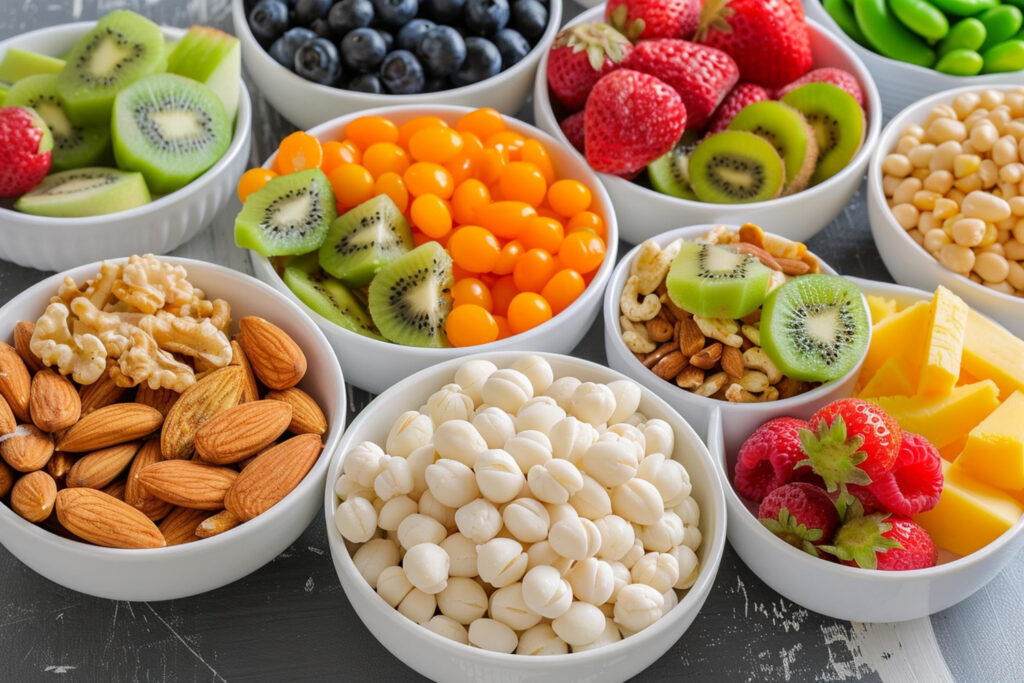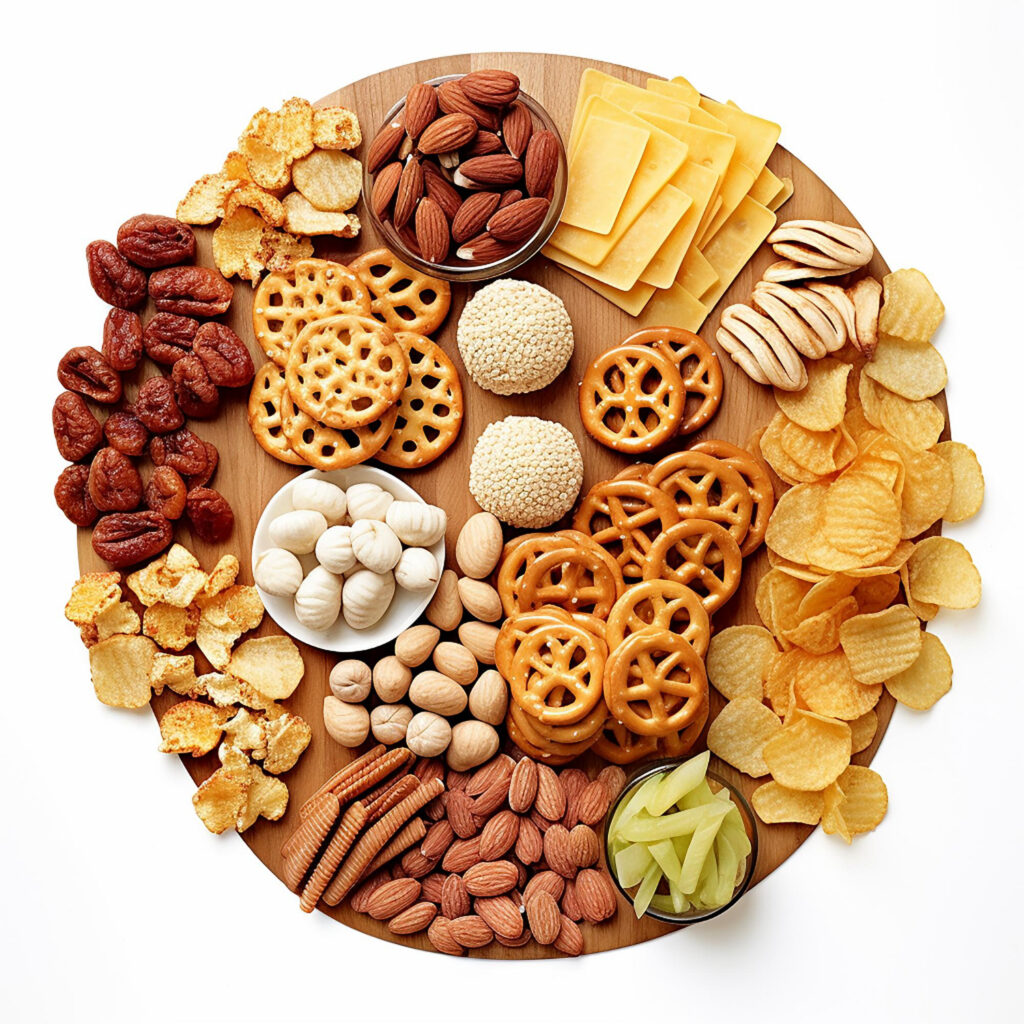
When it comes to ensuring the health and well-being of children, one of the most crucial aspects to consider is their diet. Snacks, in particular, play a vital role in a child’s daily nutrition. They are not just fillers between meals but opportunities to provide essential nutrients that contribute to a child’s growth, development, and overall health. As a Paediatric Dietitian, I’ve seen firsthand the impact that healthy snacking can have on children, from boosting their energy levels to supporting their cognitive development.
In this article, I will delve into the importance of healthy snacking for children, offer practical tips for parents, and provide nutritious snack ideas that can easily fit into a busy lifestyle. I’ll also address common misconceptions about snacking and explain why it’s essential to approach it with a balanced mindset.
The Importance of Healthy Snacking
Healthy snacking is a vital component of a child’s diet for several reasons:
- Energy Balance: Children have smaller stomachs than adults, which means they cannot eat as much in one sitting. Snacks help fill in the gaps between meals, ensuring that children have a steady supply of energy throughout the day.
- Nutrient Intake: Snacks can contribute significantly to a child’s daily nutrient intake. They provide an opportunity to incorporate more fruits, vegetables, whole grains, and dairy into their diet, all of which are essential for growth and development.

- Cognitive Development: The brain is one of the most energy-demanding organs in the body, and children need regular nourishment to support their cognitive development. Healthy snacks can help maintain concentration, alertness, and overall brain function.
- Healthy Habits: Establishing healthy snacking habits from a young age can set the stage for lifelong healthy eating behaviors. Teaching children to choose nutritious snacks over sugary or processed options is an investment in their long-term health.
Common Misconceptions About Snacking
There are several misconceptions about snacking that can lead to unhealthy habits:
- Snacking Equals Junk Food: Many people equate snacks with unhealthy foods like crisps, sweets, or sugary drinks. However, snacks can and should be nutritious. Fresh fruits, vegetables, yogurt, and whole-grain options are all excellent snack choices.
- Snacks Ruin Appetites: Some parents worry that snacking will spoil their child’s appetite for the next meal. While this can be true if snacks are too large or too close to mealtime, appropriately timed and portioned snacks can actually complement meals by providing steady energy.
- All Snacks Are Created Equal: Not all snacks are nutritionally equal. A piece of fruit and a bag of crisps may both be considered snacks, but their nutritional value is vastly different. Parents should focus on nutrient-dense snacks that provide vitamins, minerals, and fiber.
- Snacks Are Optional: Given the importance of energy and nutrient intake for children, snacks should not be considered optional. Instead, they should be viewed as an integral part of a balanced diet.
Practical Tips for Healthy Snacking
Here are some practical tips that can help parents make healthy snacking choices for their children:
- Plan Ahead: Keep a variety of healthy snacks on hand, such as fresh fruits, vegetables, nuts, and yogurt. Planning ahead can prevent the need to reach for less healthy options when hunger strikes.
- Portion Control: Teach children about appropriate portion sizes for snacks. This not only helps prevent overeating but also ensures that snacks don’t interfere with their next meal.
- Make It Fun: Get creative with snacks to make them more appealing. For example, cutting fruits and vegetables into fun shapes or creating a colorful snack platter can make healthy eating more exciting for children.
- Involve Children: Involving children in the snack preparation process can encourage them to try new foods. Let them help choose and prepare their snacks, giving them a sense of ownership over their food choices.
- Lead by Example: Children often model their eating habits after their parents. By choosing healthy snacks for yourself, you can set a positive example for your child.
- Focus on Variety: Offer a variety of snacks to ensure that children are getting a range of nutrients. This also helps prevent boredom with the same foods.
- Mind the Timing: Space snacks appropriately between meals to ensure that children are hungry but not starving when it’s time to eat.

Nutritious Snack Ideas for Children
Here are some healthy and easy-to-prepare snack ideas that can provide children with the nutrients they need:
- Fresh Fruit: Apples, bananas, berries, and oranges are all excellent snack options. They are rich in vitamins, minerals, and fiber, and they can be easily packed for on-the-go snacking.
- Vegetable Sticks with Hummus: Carrot, cucumber, and bell pepper sticks paired with hummus make a crunchy and satisfying snack that is full of vitamins, fiber, and protein.
- Yogurt with Fruit and Nuts: Plain yogurt topped with fresh fruit and a sprinkle of nuts or seeds is a calcium-rich snack that also provides healthy fats and protein.
- Whole-Grain Crackers with Cheese: Whole-grain crackers paired with slices of cheese provide a good balance of carbohydrates and protein, making them a filling snack option.
- Smoothies: Smoothies made with fruits, vegetables, yogurt, and a handful of spinach or kale are a delicious way to sneak in extra nutrients.
- Trail Mix: A homemade trail mix with nuts, seeds, dried fruit, and a few dark chocolate chips can be a fun and nutritious snack. Be mindful of portion sizes, as nuts are calorie-dense.
- Rice Cakes with Peanut Butter: Rice cakes topped with peanut butter and sliced bananas or strawberries are a quick and satisfying snack that combines carbohydrates, healthy fats, and protein.
- Boiled Eggs: Hard-boiled eggs are an excellent source of protein and can be prepared ahead of time for a convenient snack.
- Popcorn: Air-popped popcorn is a whole grain snack that is high in fiber. Skip the butter and salt for a healthier version, and consider adding a sprinkle of nutritional yeast for a cheesy flavor.
- Oatmeal Cookies: Homemade oatmeal cookies made with oats, bananas, and a touch of honey can be a healthier alternative to store-bought cookies.
Addressing Special Dietary Needs
For children with special dietary needs, such as those with food allergies, intolerances, or specific health conditions, it’s important to tailor snacks to their individual requirements.
- Food Allergies: For children with food allergies, parents should be vigilant about reading labels and avoiding allergens. Safe alternatives, such as gluten-free crackers or dairy-free yogurt, can be used as substitutes.
- Diabetes: For children with diabetes, snacks should be balanced to help manage blood sugar levels. Pairing carbohydrates with protein or healthy fats can help prevent blood sugar spikes.
- Vegetarian/Vegan Diets: For vegetarian or vegan children, snacks should provide sufficient protein, iron, and vitamin B12. Options like fortified plant-based yogurt, nuts, seeds, and legumes can help meet these nutritional needs.
- Eating Disorders: For children who may be struggling with an eating disorder, it’s crucial to work with a professional, such as an Eating Disorder Dietitian, to ensure that their snacks are nutritionally adequate and that they are eating in a way that supports their recovery.
The Role of Schools and Daycare Centers
Schools and daycare centers play a significant role in shaping children’s eating habits. It’s important for these institutions to provide healthy snack options and to educate children about the importance of good nutrition.
- Healthy Snack Policies: Schools and daycare centers should implement policies that encourage healthy snacking. This can include offering fresh fruits and vegetables, whole grains, and low-fat dairy options, while limiting sugary and processed foods.
- Nutrition Education: Incorporating nutrition education into the curriculum can help children understand the importance of healthy eating and empower them to make better food choices.
- Parental Involvement: Schools and daycare centers can work with parents to reinforce healthy eating habits. This can include providing resources on healthy snacking and encouraging parents to pack nutritious snacks for their children.
- Modeling Healthy Behaviors: Teachers and caregivers can model healthy eating behaviors by choosing nutritious snacks for themselves and promoting a positive attitude toward healthy foods.
The Impact of Marketing on Children’s Snacking Habits
One of the challenges parents face is the pervasive marketing of unhealthy snacks to children. Many snack foods targeted at children are high in sugar, salt, and unhealthy fats, which can contribute to poor eating habits and long-term health issues.
- Understanding Marketing Tactics: Parents should be aware of the marketing tactics used to promote unhealthy snacks to children. These can include colorful packaging, cartoon characters, and toy giveaways that appeal to young children.
- Reading Labels: It’s important for parents to read the nutrition labels on snack foods and to look beyond the marketing claims on the front of the packaging. Checking for added sugars, unhealthy fats, and artificial ingredients can help parents make more informed choices.
- Encouraging Critical Thinking: Teaching children to think critically about the advertisements they see can help them make better food choices. This can include discussing how commercials and packaging are designed to influence their preferences.
- Choosing Nutrient-Dense Options: Parents can counteract the influence of marketing by consistently offering nutrient-dense snack options at home. By making healthy snacks readily available and appealing, parents can help shift their children’s preferences toward healthier choices.

The Importance of a Balanced Approach
While it’s important to encourage healthy snacking habits, it’s also essential to maintain a balanced approach to food and nutrition. This means not labeling foods as “good” or “bad,” but rather focusing on the overall quality of the diet.
- Avoiding Food Restrictions: Restrictive diets can lead to unhealthy relationships with food. Instead of forbidding certain snacks, parents can emphasize moderation and balance.
- Creating Positive Food Experiences: Mealtime and snack time should be enjoyable for children. Creating a positive and relaxed environment around food can help children develop a healthy relationship with eating.
- Listening to Hunger Cues: Encouraging children to listen to their hunger and fullness cues can help them learn to eat in response to their body’s needs rather than external cues.
- Celebrating All Foods: While it’s important to prioritize nutrient-dense snacks, it’s also okay to enjoy less nutritious foods occasionally. Celebrating all foods as part of a balanced diet can help children develop a healthy and flexible approach to eating.
Conclusion
Healthy snacking is a cornerstone of good nutrition for children. By providing nutrient-dense snacks, parents can support their child’s growth, development, and overall health. It’s important to approach snacking with a balanced mindset, focusing on variety, moderation, and the enjoyment of food.
As a Paediatric Dietitian, I encourage parents to take an active role in their child’s nutrition by planning ahead, making healthy snacks fun, and involving children in the process. By doing so, parents can help their children develop lifelong healthy eating habits.
Click this website for more!